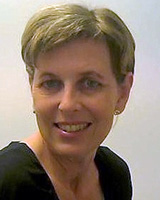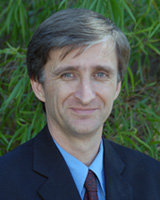Tasmania is Australia's smallest state measuring approximately 68 000 km2 and separated (by approximately 240km of ocean) from the mainland of Australia at the south-east corner of the continent. The total resident population of Tasmania is approximately 500 000 people with the greatest population density in the capital city, Hobart1. The socio-economic status of the Tasmanian population ranks lower, and unemployment is found to be slightly higher, than the rest of Australia1, and 33% of households were in receipt of government pensions and allowances as their principle source of income from 2009-20102.
In Tasmania, as in other parts of Australia, all children receive subsidised dental care through the children's dental service. Adult dental care is subsidised for socioeconomically disadvantaged people and are provided through the State government dental clinics. (The most disadvantaged 50% of the Australian population is eligible for public care, and in Australia only 25% of the population use the service3). In Tasmania these public clinics are located in four main urban areas of Tasmania, namely New Town (a suburb of Hobart) and the regional centres of Devonport, Launceston and Burnie.
Emergency demand for adult dental care is rationed through a triage system (mainly by telephone contact with the clinics), applied across the State, and is based on universal clinically agreed criteria. The triage system is implemented by trained receptionists aided by the electronic triage software system. Previous studies of augmented non-clinician based triage have found success and a high level of patient satisfaction4. The Nightingale study completed in Western Australia was among the earliest studies conducted in Australia regarding the implication of using an electronic triage system (by non-clinical staff) as a means of better managing the impact of emergency dental patients on the dental healthcare system. It concluded that this triage model can be both cost-effective and time effective5. The Tasmanian system builds on these early successes. The aim of this study was to analyse the outcomes of the triage system in delivering public emergency dental care services in Tasmania.
The study population comprised all patients who approached the dental services in Tasmania for emergency care over a period of 3 years. The data were collected from all four major fixed public dental clinics for the calendar years 2009, 2010 and 2011. A formal process for ethical release and usage of the de-identified data was completed with the Tasmanian government prior to commencement of this study. The results for each site have been de-identified.
All participants underwent triage (by trained receptionists using triage software installed on their computers) as part of the universal patient management system. All receptionists had training workshops on how to implement and manage the system prior to its implementation. The system is based on universal criteria as agreed on by a panel of state-based experts. All the patients were asked questions regarding their presenting dental complaint, and these were followed by additional relevant questions as identified by the software system; this provided a uniform approach across Tasmania. Patient responses were automatically analysed for the severity of the presenting complaint, and their priority for dental appointment was determined. In total there were seven priority outcomes: TRP1 (see in 2 days); TRP2A (see in 3 weeks); TRP2B (see in 6 weeks); TRPWL (waiting list for general care); TRPEMG (see today); TRPCOC (review - return to practitioner that normally provide patient's care ), and: TPPAP (see within 3 weeks, prosthetics). The presenting complaint and corresponding decision tree (to determine priority) were kept confidential to avoid patient coaching.
A total of 56 298 triage events were recorded during the study period and became the baseline for the data frameset for this analysis. The original data were integrated into a unified Microsoft Excel worksheet and all analysis was completed using Excel.
Ethics approval
The study was exempted from ethical review by the Human Ethics Office of Research Services, University of Tasmania on 16 March 2011 because the study design did not incorporate usage of any personal details of any particular patients.
Of the 56 298 triage events, site 4 predominated with approximately 25 000 events (44%) followed by Site 3 with approximately 16 000 events (28%) over the 3 years of the study (Table 1). Over the 3 years the relative proportion of each triage outcome was stable at each site. There was some variation between sites with Site 3 having a lower proportion of TRP1 (see in two days) than the other sites, and a higher category TRP2A (see in three weeks) (Table 2). Three of the four sites showed a steady increase (approximately 10%) in triage events from year to year (Table 2).
Table 1: Total number of events for each month
(cumulated for the 3 years) for each of the four sites
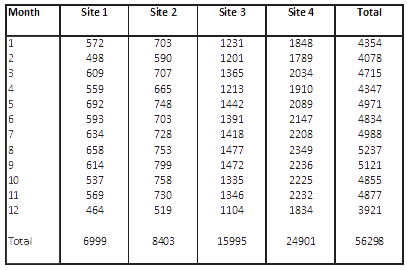
Table 2: The number (top) and proportion (bottom) of triage outcomes for each site over the
3 years of the study. Only those triage outcomes with a total number of events over 1000 are shown;
the remainder are clustered under the heading 'other'
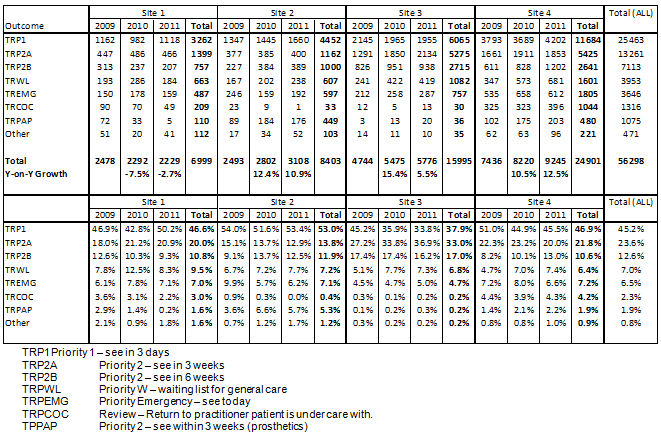
Monthly variation
Regarding month-to-month variation, month 12 (December) had the lowest overall number of events (n=3921) and August had the greatest (n=5237). Assuming that there should be an even number of triage events each month (8% per month over 12 months), triage events mid-year (winter in the southern hemisphere) tended to be above the baseline, while in summer (December to February) there were fewer events (Fig1). Some variation can be accounted for by December and January (the summer period) having most of Australia's public holidays (Christmas, New Year and Australia day). Further analysis of the monthly variation was carried out looking specifically at those patient complaints categorised as needing urgent care; called triage priority 1 outcome (eg already taking antibiotics or high strength analgesics or suffering from swelling). There was only a small variation from the expected 8% of events per month across all sites (Fig1).
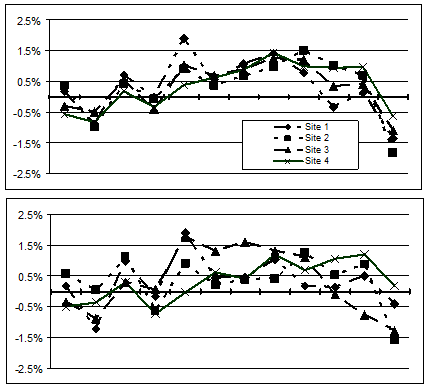
Figure 1: The month-to-month (horizontal axis, January to left) variation in the number of triage
events benchmarked against the predicted stable rate of 8% per month (vertical access)
for all events (top) and triage priority 1 outcomes (bottom).
Day of week variation
Most triage events (of all outcome types) occurred on the first day of the working week (Monday) and the least occurred on Fridays (Fig2). Across the top seven triage outcome categories (99.2% of all events) the same pattern was evident. It is well known that busy Mondays occur in most healthcare settings that offer a five-day service, and this was also the case in the Nightingale study5.
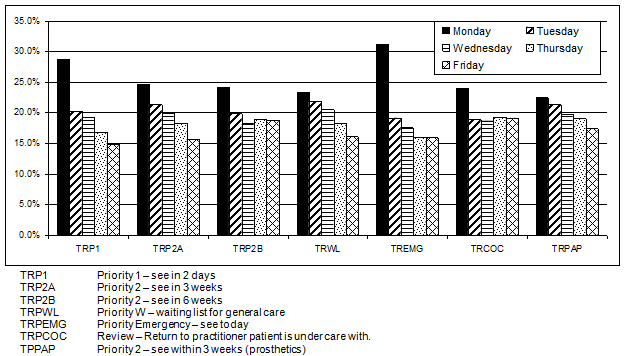
Figure 2: The proportion of each triage outcome category (horizontal axis)
occurring on each day of the week over the 3 years of the study for all sites.
Question series
Of the 56 298 triage events, questions sequences were known for 53 473 (Table 3). Of these, 50 192 resulted in a treatment priority outcome. The top six sequences of questions that lead to various outcomes included pain on waking (with or without analgesic) and swelling (Table 3). Approximately 40% of the events (n=19 062) were related to pain that woke the patient at night. The second most frequent (20%, n=9930) type of event was related to the question sequence about the use of analgesics. These two question pathways resulted in well over half of the total triage events in the 3 years of the study.
Table 3: The number of triage event outcomes (horizontal) driven by
various questions sequences (vertical) for the entire sample set
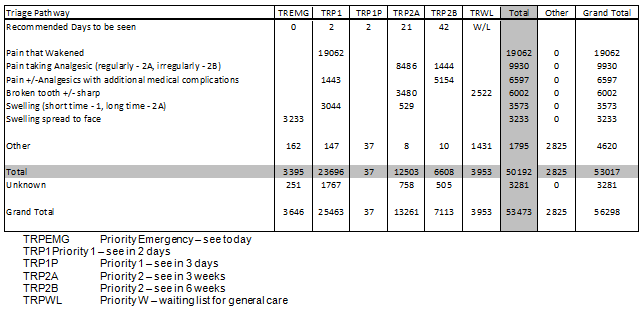
Discussion
The demand for emergency dental care in Tasmania increased each year of the study. This, coupled with the nationally acknowledged dental workforce shortage and public dental sector funding constraints6, will continue to drive a significant challenge for the services of smaller regionally focused states, such as Tasmania. The overall trend across Tasmania was approximately 10% growth per annum across the study period. This trend is a continuance of what was previously seen in the State (data not shown) and is predicted to continue in the same pattern for the foreseeable future. Tasmania is in the midst of a very significant demographic change1, including an aging population that will be more demanding of State-based health services. The National Survey of Adult Oral Health Report for Tasmania during 2004-2006 revealed that 22.4% of people had untreated dental decay7. Approximately 10% of people had no natural teeth and almost 30% had moderate to severe gum disease7. This oral health status information drives service model challenges for the future and the data of this study provides a basis for predicting future needs in terms of funding, infrastructure and workforce.
Patient coaching is a damaging risk to sustained triage systems and needs to be monitored rigorously. Though the presenting complaints and corresponding triage outcomes were kept confidential, there is always a possibility that communication between patients and staff can trend to increasing 'on-the-day' outcomes. Patients can imitate responses to get an immediate appointment which can, in turn, reduce the efficiency of the triage system. But the data presented here suggest that there is no significant increase in the trend of patients getting on-the-day dental treatment across the course of the study period. This supports the notion that patient coaching (if happening at all) is small and does not affect the overall triage outcomes.
Globally, there is always a tendency for people to approach the public emergency dental care with less acute problems8. Reasons for this could include lack of knowledge about community resources, the financial constraints of not having private health insurance or just for the sake of convenience. Hence it is necessary to have a reliable triage system in place to differentiate these patients from those who most need emergency dental care9. Direct comparison with the previously used system was not possible because this data is not available, but anecdotal evidence suggests an up to 80% reduction in complaints after implementation of the current system.
In order to deal with the current workforce shortage and funding constraints in the public health sector10, the peri-operative workforce, such as receptionists, can be utilized in innovative ways such as triage, in particular offering clinical-based systematic telephone-based assistance. This is a potential example of task substitution11. It is likely that the telephone-based triage led by the non-clinical staff, will produce challenges. Its impact, however, on the reduction of on-the-day demanded dental care (a complex matter for operational management) and the reduction in the number of complaints regarding patient dissatisfaction cannot be denied12. Hence this innovative dental triage method should be nurtured within the broad vision of system reform; however, as with all systems, ongoing and rigorous monitoring is required to retain its effectiveness over time.
References
1. Australian Bureau of Statistics. Regional Population Growth, Australia, 2009-10. (Online) 2011. Available: http: //www.abs.gov.au/ausstats/abs@.nsf/Products/3218.0~2009-10~Main+Features~Tasmania?OpenDocument (Accessed 19 October 2011).
2. Australian Bureau of Statistics. Household Income and Income Distribution, Australia, 2009-10. Cat No 6523.0. Canberra, ACT: ABS, 2011.
3. Australian Bureau of Statistics. Private health Insurance. (Online) 2006. Available: http: //www.abs.gov.au/ausstats/abs@.nsf/mf/4815.0.55.001 (Accessed 16 October 2012).
4. Ball GE. Out-of-hours emergency dental services in Scotland - a national model. British Dental Journal 2008; 205(9): 485-487.
5. Smith K, Clark A, Dyson K, Kruger E, Lejmanoski L, Russell A, et al. Guided self diagnosis: an innovative approach to triage for emergency dental care. Australian Dental Journal 2006; 51(1): 11-15.
6. Government of South Australia. South Australian Department of Health. Healthy Mouths, Healthy Lives. Australia's National Oral Health Plan 2004-2013. Adelaide, SA: Government of South Australia, 2004.
7. Slade GD, Spencer AJ, Roberts-Thomson KF. Australia' dental generations: the National Survey of Adult Oral health 2004-06. AIHW cat.no.DEN 165. Canberra, ACT. Australian institute of Health and Welfare, 2007.
8. Luzzi L. Predicting relative need for urgent dental care. Community Dental Health 2009; 26(3): 162-169.
9. Nash KNH, Tillman M. Using medical screening examinations to reduce emergency department overcrowding. Journal of Emergency Nursing 2009; 35: 109-113.
10. Taskforce NHW. Health workforce in Australia and factors for current shortages. Sydnew, NSW: Taskforce NHW, 2009.
11. Miseldine P, Taleb-Bendiab A, England D, Randles M. Addressing the need for adaptable decision processes within healthcare software. Informatics for Health and Social Care 2007; 32(1): 35-41.
12. Qureshi NA. Triage systems: a review of the literature with reference to Saudi Arabia. Eastern Mediterranian Health Journal 2010; 16(6): 690-698.

